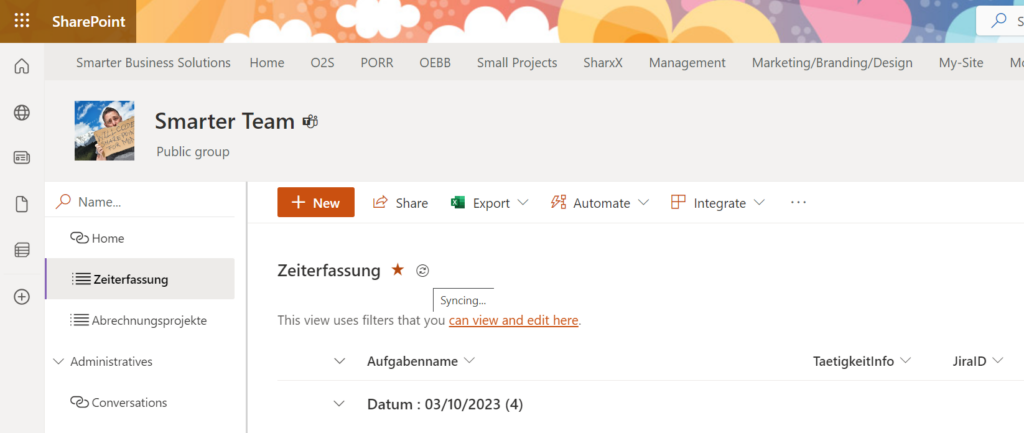Microsoft SharePoint has become a cornerstone for countless organizations. While it brings many advantages, there are moments when users run into challenges—one of the most common being synchronizing SharePoint lists. This article unpacks a real‑world case, explains what’s going on, and offers practical remedies.
The real‑world case: a timesheet list
An essential part of our daily operations is a timesheet list that grew to more than 5,000 items over time. A synchronization error occurred, causing some team members to lose newly created time entries. These missing entries were conspicuously absent from our daily Power Automate and Power BI reports. On closer inspection, the sync status for these users stayed stuck on “Syncing.”

The 5,000‑item myth
It’s a common belief that sync issues appear as soon as a SharePoint list exceeds 5,000 items. To counter this, we archived older entries to keep the total below 2,000. The problem persisted.
A quick search confirms this is a widespread issue. Microsoft’s broad recommendation, as described in their policy documentation, is to disable list synchronization entirely—effectively stopping the SharePoint.exe process, as noted in this forum thread.

For many organizations, switching synchronization off across the board simply isn’t practical.
A targeted fix
Thanks to insights from Mike Hatheway’s blog, we found a more nuanced approach. Instead of disabling the entire synchronization mechanism, we turned off “Offline Client Availability” for the affected list. We knew this setting from document libraries, but weren’t aware of its impact on regular Microsoft Lists.

After changing this setting, you may need to restart the SharePoint.exe process for it to take effect.
Final thoughts
SharePoint list synchronization issues can be frustrating, but they’re far from insurmountable. While sweeping measures like Microsoft’s recommendation can help in some cases, a more specific intervention often solves the issue without compromising other functionality. Tapping into community knowledge and blogs frequently yields practical fixes—and showcases the power of collective experience.


